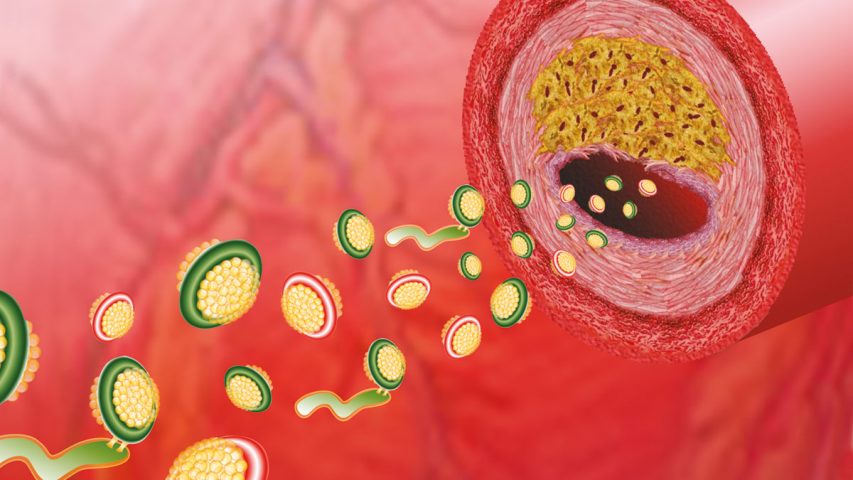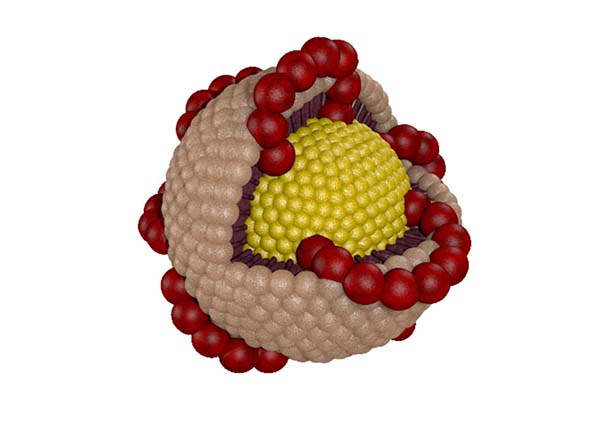- Have any questions? Contact us!
- info@dr-rath-foundation.org

England’s National Health Service Says It Will End ‘Ineffective’ Medical Treatments
July 4, 2018
Study Finds Significant Proportion Of Older Adults Deficient In Vitamin B12 And Folate
July 6, 2018How To Lower High Cholesterol Levels Naturally, Without Drugs

Across the world, millions of people have high blood levels of cholesterol, triglycerides, low-density lipoproteins (LDL), lipoprotein(a), and other risk factors for cardiovascular diseases. Not yet appreciated by conventional medicine, these are all merely ‘secondary’ risk factors as they only cause damage in situations where the structural integrity of the artery walls has been weakened due to a chronic deficiency of micronutrients. While the pharma industry wants you to believe the only way to lower levels of cholesterol is to take statin drugs for the rest of your life, Dr. Rath’s Cellular Medicine approach can enable you to lower cholesterol naturally, without drugs.
In its World Health Report for 2013, the World Health Organization (WHO) estimated that high cholesterol levels cause around 4.4 million deaths per year, which is about 7.9% of the global total. While publishing statistics such as these, however, the WHO has consistently failed to recognize the primary cause of cardiovascular disease. Clearly, therefore, unless we understand why elevated levels of cholesterol occur, we will not be able to properly address the question of how to correct them.
What is cholesterol, and what does it do?

The above image illustrates the construction of a low-density lipoprotein molecule (LDL). The central core of the LDL molecule consists of cholesterol and other fats (yellow and grey balls). The red chain of amino acids, a protein called apoprotein B, gives the molecule its round shape.
Cholesterol is a fatty substance that is vital for the normal functioning of the body. A major component of cell membranes, it is also used to make essential molecules such as steroid hormones, fat-dissolving bile acids, and vitamin D. A measure of cholesterol’s importance can be seen in the fact that the liver and intestines make around 80 percent of the amount the body needs each day to stay healthy. Contrary to the advice about eating low-fat diets that is regularly emphasized by many conventional doctors, the fact is that only around 20 percent of the body’s cholesterol actually comes from our food.
So why does the body sometimes produce high levels of cholesterol, triglycerides, low-density lipoproteins, lipoprotein(a), and other metabolic products? The answer is that it is able to use these substances as repair factors. A chronic weakness of the blood vessel walls significantly increases the body’s demand for them and, consequently, their rate of production.
Conventional treatment of high cholesterol levels
As is similarly the case with other cardiovascular conditions, the conventional medicine approach fails to treat the underlying cause of elevated cholesterol levels. Instead, it focuses on the use of statins and other synthetic drugs with the goal of artificially lowering levels of cholesterol. But as Dr. Rath’s research has shown, the primary cause of cardiovascular disease and the weakening of the artery walls is not cholesterol, it is a long-term deficiency of micronutrients – in particular of vitamin C. Ensuring an optimum intake of the correct micronutrients therefore makes it possible to prevent cardiovascular disease naturally, without drugs.
However, because vitamins and other naturally occurring micronutrients cannot be patented, multinational pharmaceutical companies are engaged in a worldwide ‘scam’ to convince patients that cholesterol is the ‘enemy’ of cardiovascular health and that patented statin drugs provide the only answer. As we describe in the Cholesterol Facts section of our website, this entire multibillion dollar business is built on a combination of fear and lies.
The side effects of statins are numerous and include muscle pain, cognitive problems and neuropathy, as well as liver and pancreatic dysfunction. Statin drugs have also been linked to the development of diseases such as cancer, diabetes, and Parkinson’s disease. Clearly, therefore, they do not provide the right answer for resolving high levels of cholesterol.
The Cellular Medicine solution to high cholesterol levels
The correct approach to successfully lowering blood levels of cholesterol and other secondary risk factors is to stabilize the structural integrity of the artery walls. Through doing so, the metabolic demand for an increased production of these risk factors in the body is decreased. To achieve this, and in addition to his basic Cellular Medicine recommendations, Dr. Rath recommends that patients with elevated levels of cholesterol and other metabolic disorders take the following micronutrients in higher dosages:
| Vitamin C: For the protection and natural healing of the artery walls; for reducing the production of cholesterol and other secondary risk factors in the liver; and for lowering elevated blood levels of these secondary risk factors. |
| Vitamin E: For the antioxidant protection of blood fats and cells. |
| Vitamin B1: For optimizing cellular metabolism and, particularly, for the delivery of bioenergy. |
| Vitamin B2: For optimizing cellular metabolism and, particularly, for the delivery of bioenergy. |
| Vitamin B3: For lowering the elevated production of cholesterol and lipoproteins in the liver. |
| Vitamin B5: For the structural component of the central metabolic molecule of cells (coenzyme A), and for the optimal metabolic burning of fat molecules. |
| Vitamin B6, Biotin & Folic Acid: For counteracting increased levels of the risk factor homocysteine, and for optimizing the metabolism of cells. |
| Carnitine: For optimizing the cellular metabolism of fats, and for lowering triglyceride levels. |
When starting micronutrient supplementation, short-term elevated levels of cholesterol are not unusual
Interestingly, some patients report a transitory rise in cholesterol levels when they initially start taking supplementary micronutrients. This important mechanism was first described in The Lancet medical journal in 1972 by a British researcher, Dr. Constance Spittle. She reported that vitamin supplementation in patients with existing cardiovascular disease frequently led to a temporary increase in levels of cholesterol in the blood.
As we now know, this temporary rise in cholesterol is a sign of the healing process beginning to take place in the artery walls, where fatty deposits that are no longer needed to stabilize the arteries are released into the bloodstream. This mechanism is of course not only relevant for cholesterol but also for triglycerides, low-density lipoproteins, lipoprotein(a), and other secondary risk factors.
So don’t worry. If your blood cholesterol levels initially rise when you begin following the micronutrient recommendations shown above, it can indicate the reversal of existing deposits in your artery walls. You should therefore continue the micronutrient program until, after a period of several months, your blood level of cholesterol eventually decreases below its initial value.
For more information on the Cellular Medicine approach to controlling high cholesterol levels, read chapter 3 of Dr. Rath’s book, Why Animals Don’t Get Heart Attacks…But People Do!
As always, if you have any questions about the issues discussed in this article, please feel free to contact us.



